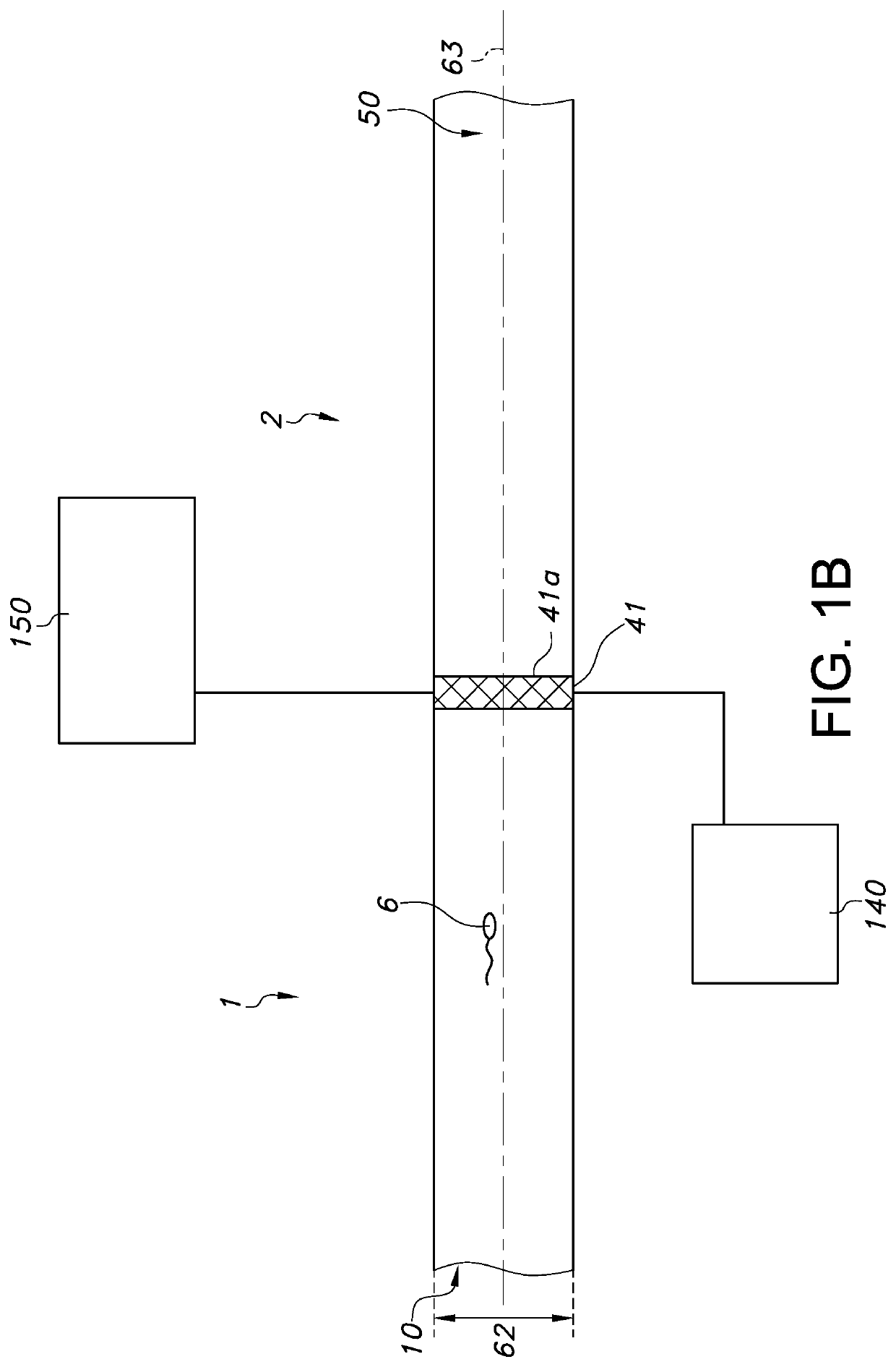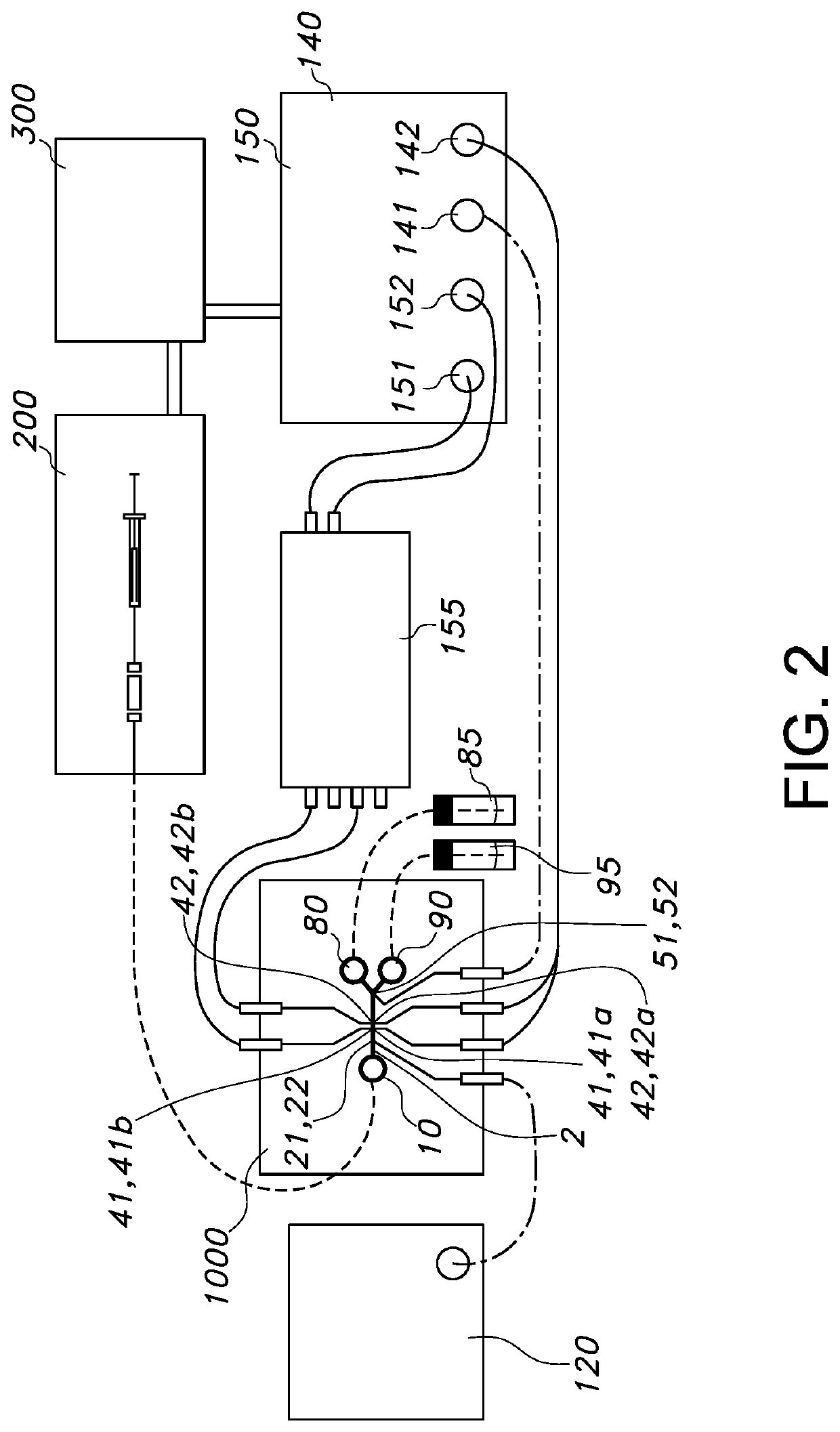Microfluidic device for selection of semen
a microfluidic device and semen technology, applied in the field of system for sorting sperm cells, can solve the problems of inability to recover sperm cells for ai purposes, and inability to perform sperm analysis and selection. , to achieve the effect of low sperm cell motility, high quality and high probability of fertilization
- Summary
- Abstract
- Description
- Claims
- Application Information
AI Technical Summary
Benefits of technology
Problems solved by technology
Method used
Image
Examples
Embodiment Construction
[0087]The method and the system of the invention as described herein are especially based on several functions that may advantageously be combined in different embodiments. The main function, especially, comprises a system and a method for analyzing a characteristic of a sperm cell flowing in a fluid channel, especially analyzing the sperm cell for abnormalities. Especially, analyzing comprises analyzing the impedance measurements performed with electrodes provided in the flow channel at an analyzing zone, wherein the impedance of a flowing fluid comprising the sperm cell over time is used to provide time-dependent impedance data, for instance comprising (a shape of) an impedance measuring curve. The time-dependent impedance data may be provided using one pair of electrodes as well as using two pairs of electrodes or using further pairs of electrodes. Herein a shape of an impedance measurement curve may indicate morphological properties (or other characteristics) of the individual c...
PUM
| Property | Measurement | Unit |
|---|---|---|
| height | aaaaa | aaaaa |
| width | aaaaa | aaaaa |
| distance | aaaaa | aaaaa |
Abstract
Description
Claims
Application Information
 Login to View More
Login to View More - R&D
- Intellectual Property
- Life Sciences
- Materials
- Tech Scout
- Unparalleled Data Quality
- Higher Quality Content
- 60% Fewer Hallucinations
Browse by: Latest US Patents, China's latest patents, Technical Efficacy Thesaurus, Application Domain, Technology Topic, Popular Technical Reports.
© 2025 PatSnap. All rights reserved.Legal|Privacy policy|Modern Slavery Act Transparency Statement|Sitemap|About US| Contact US: help@patsnap.com



